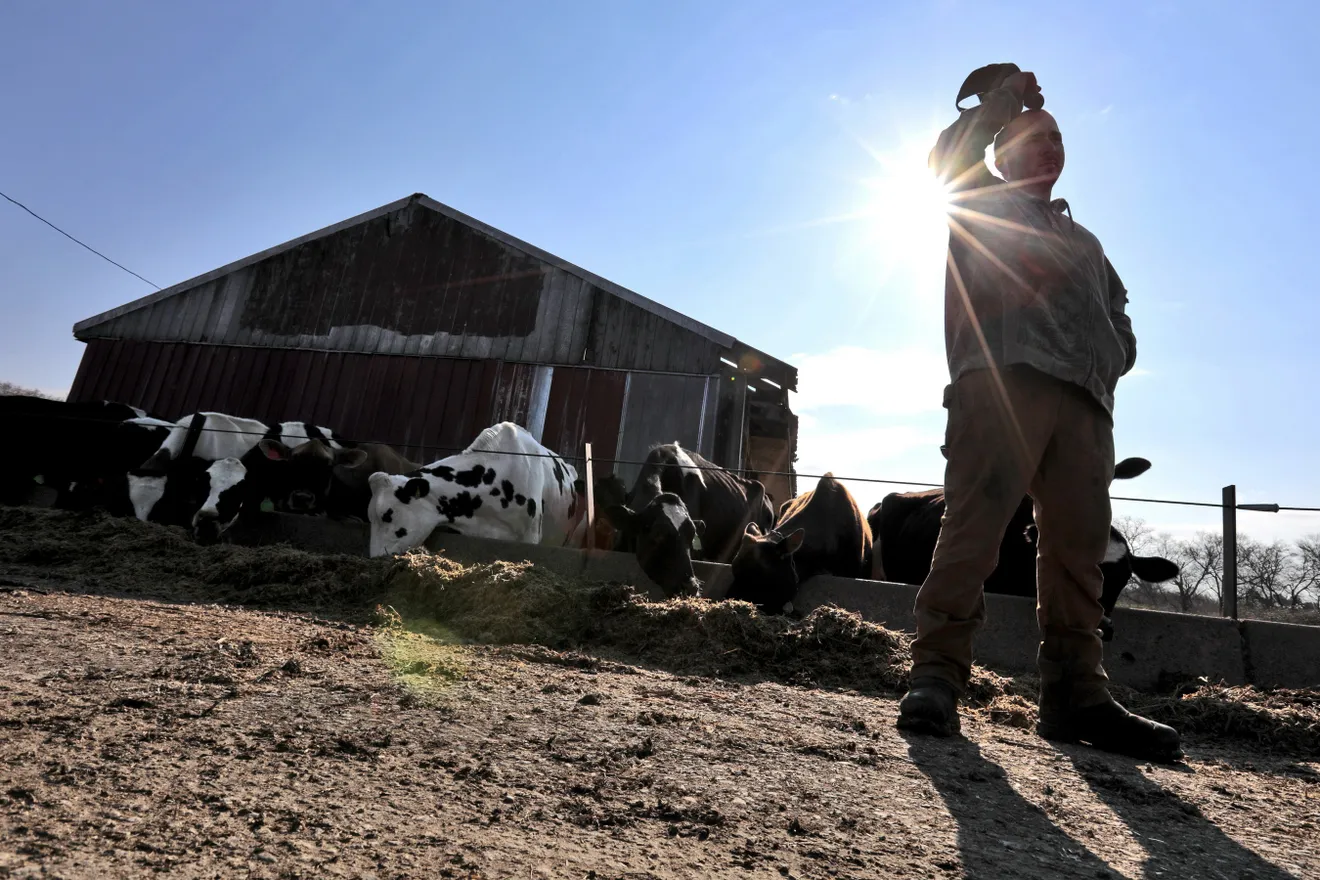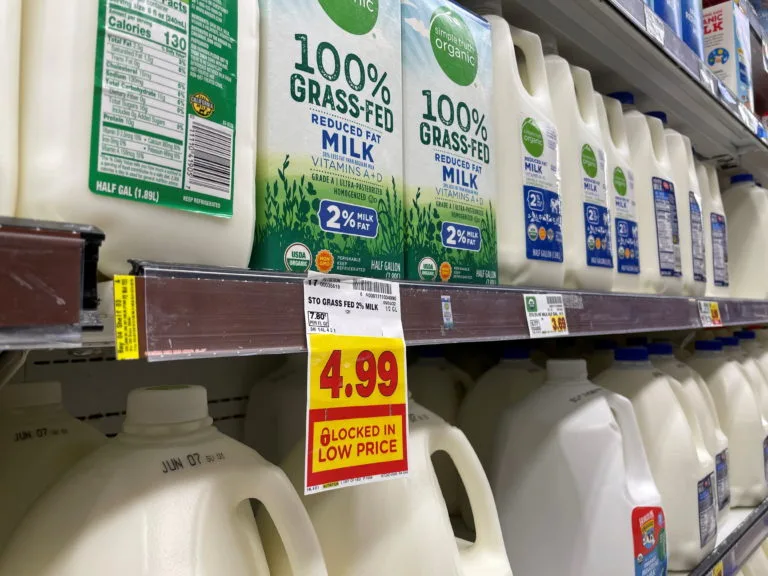Why are butter prices still high? How does this affect your profitability and operations? Learn more.
Summary:
Butter prices remain robust, showing no signs of retreat since soaring past $3 per pound in the CME spot trade in May. Despite global fluctuations and regional challenges such as Europe’s bluetongue disease affecting milk production, the insatiable demand for butter drives record-breaking production and tight cold storage inventories. The U.S. market sees consistently high cream multiples, particularly in the Midwest and Western states. Rising international demand for anhydrous milkfat has significantly boosted exports, keeping the domestic butter balance sheet precariously tight. As we move into fall, industry experts question whether historical seasonal price spikes will occur, given this year’s already elevated market. High butter prices pose opportunities and challenges for dairy farmers.
Key Takeaways:
- Butter prices have maintained over $3 per pound in the CME spot trade since May.
- Regional challenges, like Europe’s bluetongue disease, impact milk production but not the rising demand for butter.
- The U.S. sees consistently high cream multiples, especially in the Midwest and Western states.
- International demand, notably for anhydrous milkfat, has boosted exports significantly.
- The domestic butter balance sheet remains tight due to robust domestic and international demand.
- Given the high prices throughout the year, experts are unsure if typical seasonal price spikes in the fall will occur.
- High butter prices present opportunities and challenges for dairy farmers and industry professionals.

Butter prices maintain robust stability, exceeding $3 per pound, defying market predictions and historical trends. This presents both opportunities and challenges for dairy farmers and industry experts. While high prices can boost income for producers, they also signal constrained supply and potential volatility ahead. In this post, we’ll delve into the factors underpinning the persistent high butter prices and their impact on the dairy sector and the future. Join us as we explore what’s driving these enduringly high prices and what it means for your bottom line, highlighting the resilience of the dairy sector in the face of these challenges.
| Month | U.S. Butter Prices (CME Spot, $/lb) | Global Dairy Trade Butter Prices ($/lb) | European Butter Prices ($/lb) |
|---|---|---|---|
| May 2024 | $3.05 | $3.00 | $4.20 |
| June 2024 | $3.10 | $2.97 | $4.15 |
| July 2024 | $3.12 | $2.95 | $4.18 |
| August 2024 | $3.15 | $2.95 | $4.10 |
| September 2024 | $3.18 | $2.95 | $4.22 |
Market Dynamics Driving Steady Butter Prices
Butter prices in the United States remain astonishingly high, with CME spot trading prices hovering around $3 per pound or higher since late May. This constant plateau demonstrates significant market stability, although at excessive levels. In comparison, butter prices fell somewhat in the most recent worldwide Dairy Trade auction. Still, they ended at a robust $2.95 per pound, demonstrating worldwide demand and restricted supply.
In Europe, the situation seems much more severe. Butter costs have risen beyond $4 per pound due to lower milk output and diminishing components, aggravated by bluetongue illness. These factors have driven European butter prices to unsustainable highs, highlighting the worldwide difficulty of sustaining appropriate supply levels.
The scenario exemplifies a broader trend in the dairy business, in which regional concerns and global market needs combine to produce a consistently high-pricing environment. This viewpoint is critical for comprehending the continuing problems and strategic choices confronting dairy farmers and allied sectors.
Regional Cream Multiples: A Tale of Two Markets
When comparing cream multiples from various areas of the United States, a notable difference occurs between the Midwest and Western states. Cream multiples in the Midwest have been at or above the five-year average since mid-August. This suggests a high market for cream, which will help local butter manufacturing. However, high milk prices imply that less cream is available for butter production in lower-producing locations.
In contrast, cream multiples in the Western states, which account for more than half of U.S. butter output, have been higher than the five-year average through 2024. High multiples in the West further reduce cream supply, resulting in less cream being transported to the central United States for churning. This dynamic reduces butter output in other places, contributing to high pricing.
The consequences of these changes are considerable. When cream is expensive in the West, it does not flow to central churning plants, decreasing Western output. This geographical disparity puts increasing pressure on butter prices nationally. Furthermore, with cream being expensive in these primary producing locations, the total butter supply chain is unrestricted, prolonging the cycle of high butter prices. Understanding these regional distinctions allows dairy producers and industry stakeholders to predict market shifts and prepare appropriately.
The Insatiable Demand for Butter: Driving Record Production and Tight Supplies
The unquenchable need for butter is a significant cause of our constantly high costs. This demand has driven record-high production levels, with the United States hitting a new record in July by producing 162 million pounds of butter. Even though production was running at total capacity, cold storage stockpiles fell by more than 23 million pounds between June and July. This is the most dramatic fall between these two months since 2013; such a massive reduction in storage demonstrates how strong and consistent demand has been.
When it comes to resolving the issue of how this need is supplied, we must go outside our borders. While American butter is not in high demand internationally, increasing worldwide prices have made it more competitive. This resulted in a significant rise in exports in June and July, hitting their highest levels in almost a year. Additionally, Anhydrous Milkfat (AMF) shipments increased to 5 million pounds in July, more than tripling the data from July 2023. This increased local and foreign demand has kept the butter balance sheet tight and prices high. As we approach the autumn, when prices often rise, it’s worth considering if this pattern will withstand the usual seasonal pressures.
Export Market Dynamics: Adding Complexity to Butter Price Scenario
Export market dynamics have introduced another layer of complexity to the already intricate butter pricing landscape. Despite not being in high demand in previous years, U.S. butter has regained popularity as global prices have surged. This enhanced competitiveness is mainly due to the rise in worldwide butter costs, making American butter a more attractive option for foreign consumers. The increasing global demand for American butter is a testament to its quality and appeal, which should instill pride and confidence in dairy producers and industry stakeholders.
Recent figures show a considerable increase in butter exports in June and July, hitting their highest levels in a year. This development may be linked to the fact that, although local demand remains strong, the global market provides an extra outlet for excess output. Anhydrous milkfat (AMF), a concentrated version of butterfat utilized in various applications, reflects this tendency. AMF exports increased to 5 million pounds in July, more than double the level from July 2023. The struggle for butterfat between local usage and AMF exports highlights the limited supply scenario.
The foreign market for American dairy products has offered a cushion against considerable pricing pressure. The butter market’s tight balance sheet seems sustainable, with strong domestic demand and increased export activity. This convergence of forces assures that U.S. butter stays competitively priced, retaining its worldwide appeal while maintaining steady local pricing.
Anticipating Seasonal Fluctuations: Will This Fall Buck the Trend?
Interestingly, butter prices often rise in the autumn, driven by increasing consumer demand ahead of the Christmas baking season. However, this increase is usually followed by a dip after the Christmas shopping season. Are dairy producers preparing for this predicted fluctuation? This is a crucial time for strategic planning and proactive measures to manage the expected seasonal fluctuations in butter prices.
But this year might be different. Since butter prices have remained at historic levels for most of 2024, another significant October surge becomes less expected. High pricing throughout the year may mitigate any further seasonal spike. You’ll want to keep an eye on this growing situation.
Furthermore, new Class III milk production will begin shortly, diverting some milk from butter manufacturing. This may bring some respite from the current butter costs. However, it is doubtful that prices will drop. Why? The butter market will remain tight because of strong local and rising foreign demand.
So, what can dairy producers expect in the following months? Expect seasonal reprieve after the holidays, but don’t expect prices to drop considerably. The more significant dynamics—high global pricing, robust local demand, and increased Class III production—are expected to keep butter prices up for the foreseeable future.
Make sure your tactics align with these market realities. Stay informed, prepare ahead, and modify your output appropriately. Depending on how successfully you manage fluctuations in butter prices, they might bring obstacles and opportunities.
High Butter Prices: Windfall or Whirlwind?
Dairy producers often regard high butter prices as a windfall. After all, as prices rise, revenues usually follow, giving much-needed financial support. Inflationary prices may result in higher rewards for milk, particularly when compared to regular pricing periods. This may assist with anything from equipment improvements to expanding operations. Is it all sunshine and rainbows?
As is customary, there is an opposing viewpoint. Higher butter prices do not exist in a vacuum. As demand drives prices upward, input costs often increase in tandem. Feed, labor, and transportation become more costly, reducing profits. Additionally, market volatility becomes a significant problem. One month of high pricing does not ensure long-term stability. Prices may fall as rapidly as they rise, causing financial plans to fail.
So, although rising butter prices provide an opportunity for more earnings, they also create obstacles that producers must carefully manage. Balancing short-term advantages with long-term viability requires experience and a thorough grasp of market dynamics and cost control tactics.
The Bottom Line
Despite a minor worldwide market decline, butter prices have remained stable this year due to strong local demand. The Midwest and Western states have greater cream multiples than the five-year average, influencing butter production patterns. Record-breaking butter output levels contrast starkly with declining cold storage stockpiles, emphasizing robust demand patterns. Even with noticeable seasonal tendencies and the possibility of a price drop after Christmas, projected additional Class III supply might prevent prices from falling.
It is more important than ever for dairy farmers and industry experts to keep up with market trends and make quick business choices. Are you prepared to manage these turbulent markets, and how will your strategy change to protect your gains as butter prices fluctuate?
Learn more:
- Is the Summer Heat Finally Over? Dairy Farmers See Milk Production Stabilize, but Challenges Remain!
- Dairy Market Analysis: Milk Futures Hold Steady, Spot Cheese Gains, and Butter Slips
- Cheese Prices Fall While Milk Remains Scarce
 Join the Revolution!
Join the Revolution!
Bullvine Daily is your essential e-zine for staying ahead in the dairy industry. With over 30,000 subscribers, we bring you the week’s top news, helping you manage tasks efficiently. Stay informed about milk production, tech adoption, and more, so you can concentrate on your dairy operations.







 Join the Revolution!
Join the Revolution!





